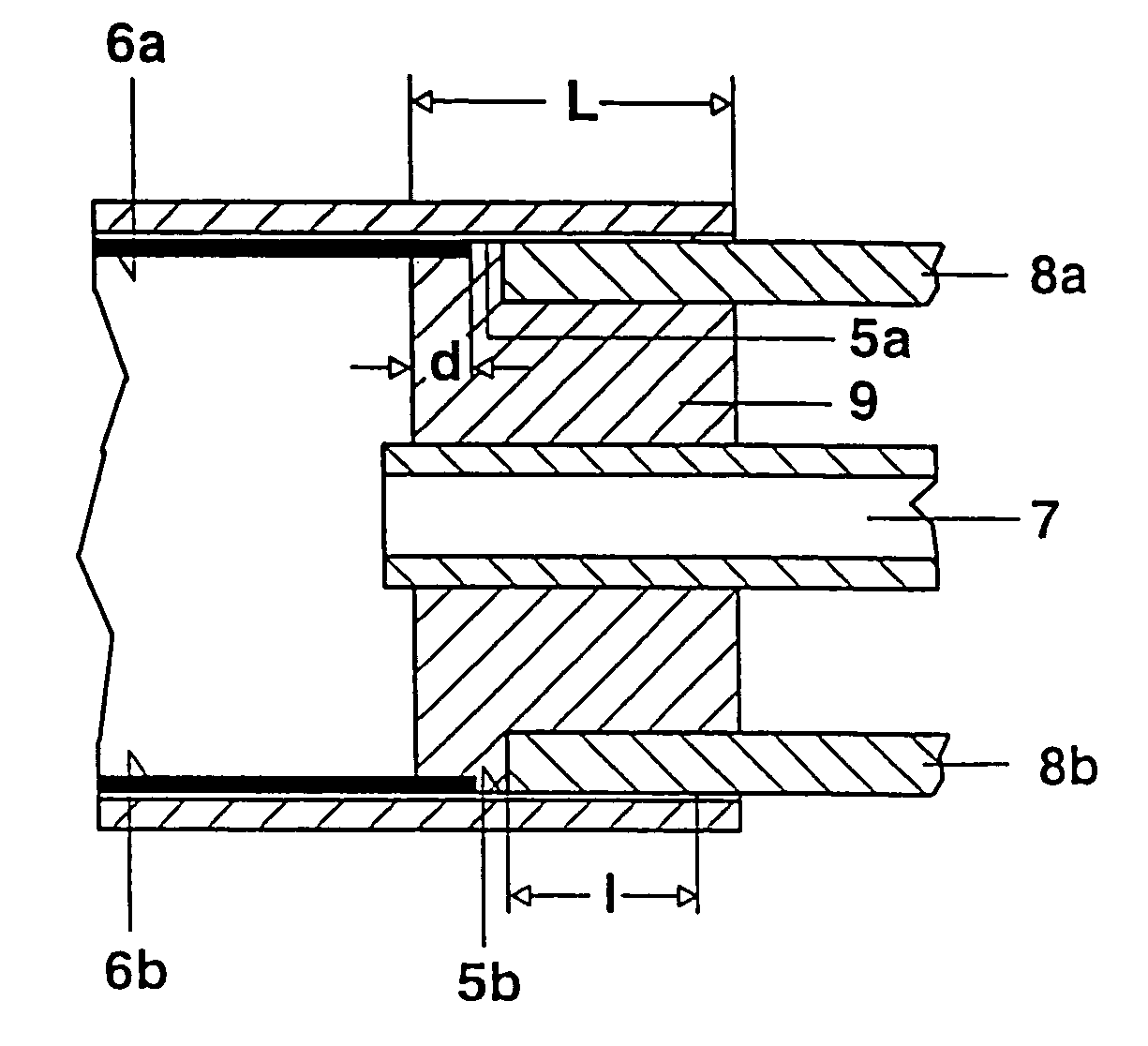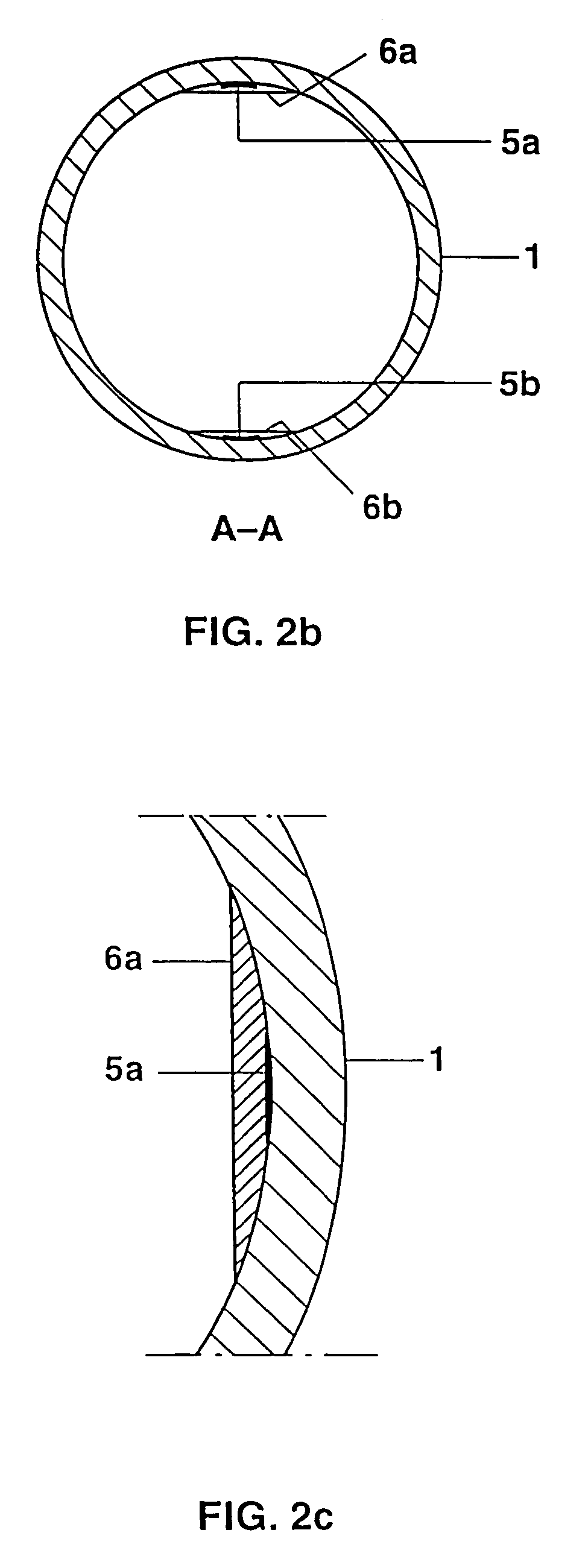Dielectric barrier discharge lamp with pinch seal
- Summary
- Abstract
- Description
- Claims
- Application Information
AI Technical Summary
Benefits of technology
Problems solved by technology
Method used
Image
Examples
Embodiment Construction
[0024]The production and technical features of the dielectric barrier discharge lamp according to the invention are illustrated in the figures described below.
[0025]FIG. 1 shows part of a discharge tube 1 with an external diameter of approx. 10 mm made from soda-lime glass (e.g. glass No. 360 produced by Philips and / or AR-Glass produced by Schott), which is initially still open at a first end 2 but has already been closed at the other end 3 by means of a fused butt joint 4.
[0026]FIGS. 2a, 2b show the still open end 2 of the discharge tube 1 in the form of a diagrammatic partial longitudinal sectional view and a cross-sectional view on line AA respectively. The inner wall of the discharge vessel 1 has already been provided with two diametrically arranged inner electrodes 5a, 5b which are formed as linear conductor tracks and are made from silver with a thickness of approx. 10 μm and a width of approx. 1 mm, covered with a dielectric barrier 6a, 6b made from soldering glass, thickness...
PUM
 Login to View More
Login to View More Abstract
Description
Claims
Application Information
 Login to View More
Login to View More - R&D Engineer
- R&D Manager
- IP Professional
- Industry Leading Data Capabilities
- Powerful AI technology
- Patent DNA Extraction
Browse by: Latest US Patents, China's latest patents, Technical Efficacy Thesaurus, Application Domain, Technology Topic, Popular Technical Reports.
© 2024 PatSnap. All rights reserved.Legal|Privacy policy|Modern Slavery Act Transparency Statement|Sitemap|About US| Contact US: help@patsnap.com










